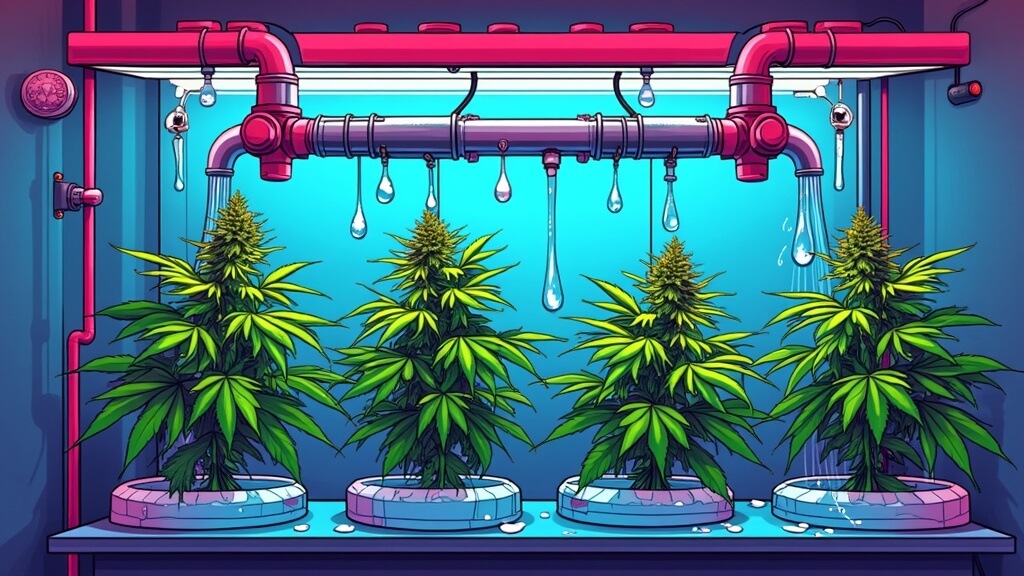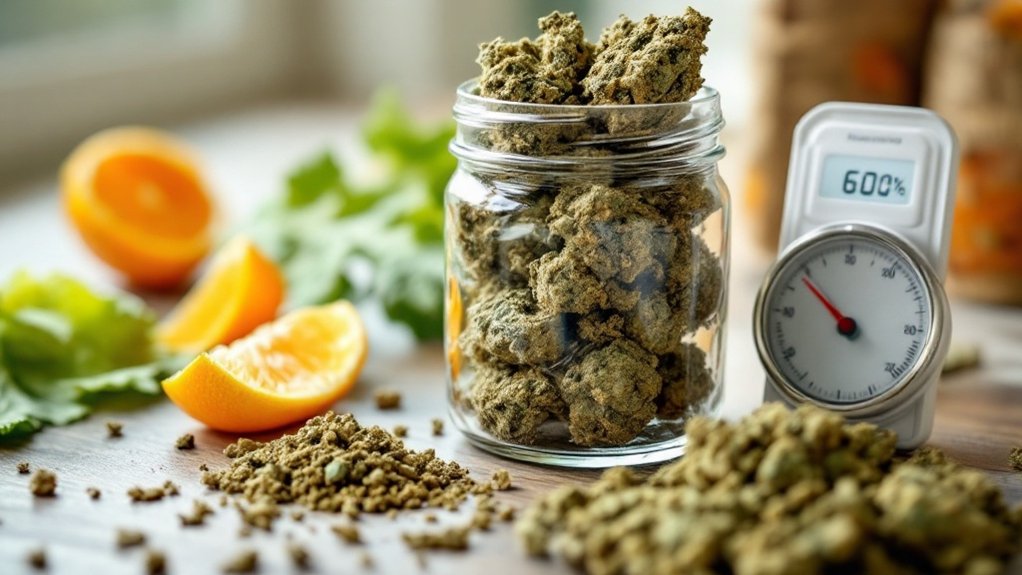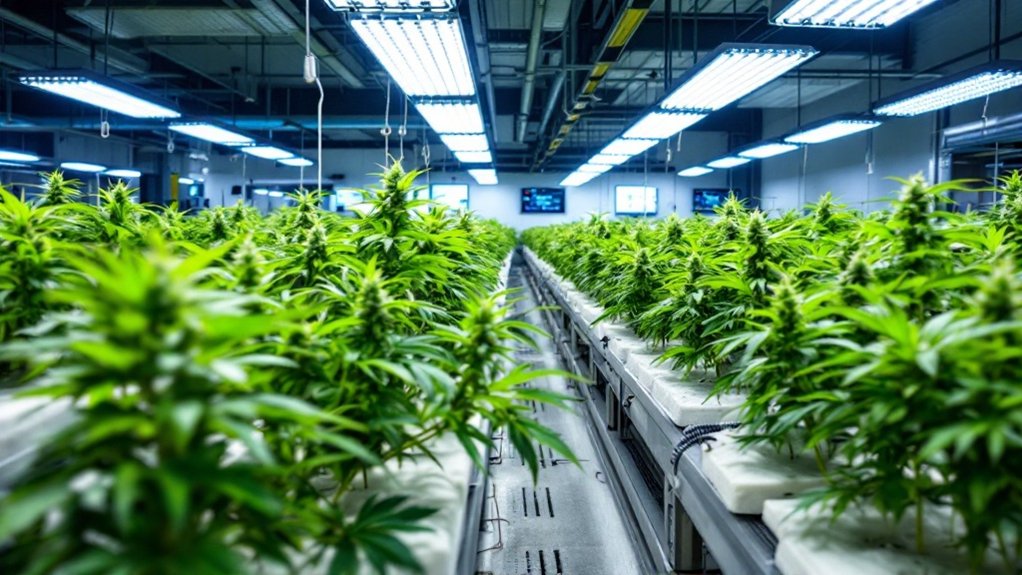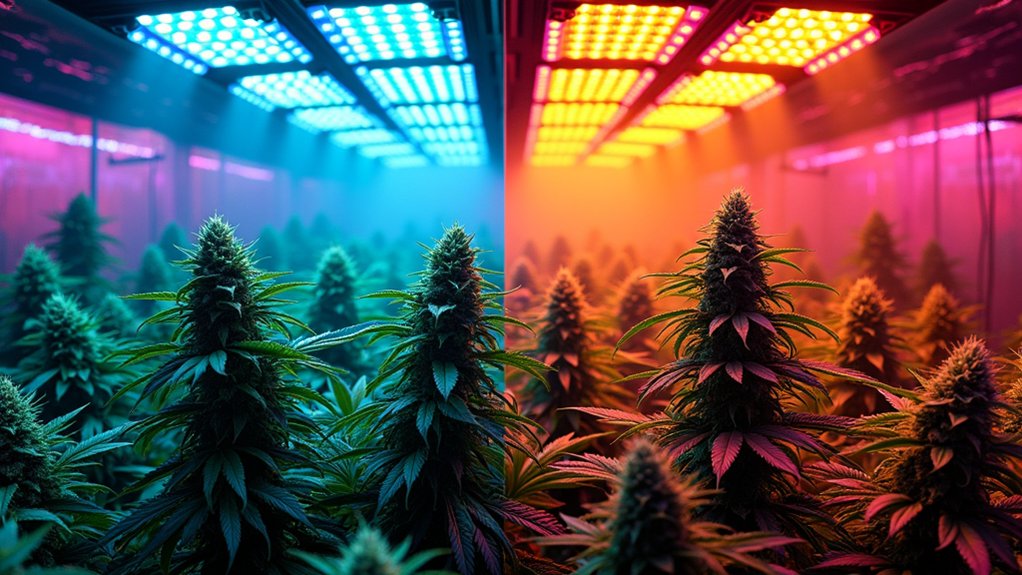Commercial hydroponic systems offer soil-free growing with impressive yields. Options include Nutrient Film Technique, Deep Water Culture, Ebb and Flow, and Drip systems each with distinct advantages. Drip systems handle larger plants but require maintenance. Ebb and Flow suits both small and large operations. Initial costs can run high. Equipment needs include pumps, timers, and reservoirs. The real challenge? Balancing technology complexity with your operation’s needs.

While traditional farming grapples with unpredictable weather patterns and diminishing arable land, automated commercial hydroponic systems are revolutionizing how we grow food—without a speck of soil in sight.
Commercial growers today face a buffet of high-tech options. The choices? Overwhelming.
Nutrient Film Technique (NFT) systems deliver a thin film of nutrient solution across plant roots. Deep Water Culture suspends roots directly in nutrient-rich water. Ebb and Flow systems periodically flood growing media before draining back to reservoirs. Pretty fancy, right?
Drip hydroponics, a commercial favorite, delivers precise nutrients through individual emitters. It runs 2-15 minutes every couple of hours during light periods. The flow rates range from 0.5-2 GPH. Not too shabby for plants with expensive taste.
Precision nutrient delivery at your plants’ fingertips—because modern crops deserve their meals served with timing and style.
These systems accommodate larger plants than other methods. They’re compatible with rockwool, perlite, or coco coir in containers ranging from 1-5 gallons. Large-scale operations love drip systems for their scalability and customization options. Different plants growing simultaneously? No problem.
Ebb and Flow systems function in both hobbyist and commercial environments. They use grow trays filled with media or individual modules. The setup requires pumps and timers. Some operations position them on slopes—gravity does the work returning nutrient solution to reservoirs. Genius, or just plain lazy?
Choosing crops matters. Larger herbs thrive in drip systems. Fruiting plants like peppers and tomatoes perform well. Even vining crops—squash, melons, pumpkins—can be accommodated. Cannabis producers have embraced these systems too. Efficiency sells.
Implementation isn’t without challenges. Drip systems demand complex setup and regular maintenance. Emitters clog. Initial costs are higher. Compared to traditional soil growing, hydroponics provides precise nutrient control for optimal plant growth and development. These systems also significantly reduce pest risks compared to conventional farming methods. Business planning must account for these realities.
Required equipment includes appropriately sized water pumps, timers, reservoirs, and delivery mechanisms specific to each system type. The technology isn’t simple, but the results speak volumes.
Soil farming? That’s so last century.
Frequently Asked Questions
What ROI Can I Expect From a Commercial Hydroponic System?
Commercial hydroponic systems deliver ROIs ranging from 15% to 40% annually. Not too shabby.
Break-even typically happens within 1-3 years, with faster growth cycles generating quicker cash flow.
Top performers? Lettuce, basil, strawberries, tomatoes. The numbers don’t lie—plants mature 25% faster than soil-grown counterparts.
Initial investment? Steep. But with proper crop selection and operational efficiency, the returns can be substantial.
Market’s growing at 10.7% annually through 2030.
How Do Automated Systems Handle Power Outages?
Automated hydroponic systems don’t handle outages well. At all. When power cuts, everything stops—pumps, sensors, controllers. Plants start stressing fast.
Solutions exist, thankfully. UPS systems provide short-term backup for a few hours. Generators offer longer protection but need testing and proper ventilation. Solar power’s gaining traction too.
Smart growers use hybrid approaches. Because let’s face it—when the lights go out, your high-tech farm becomes an expensive plant cemetery. Fast.
Which Crops Yield the Highest Profit Margins in Hydroponic Systems?
Highest profit margins in hydroponics?
Microgreens lead the pack, delivering a whopping 20-60% net profit margin. Quick turnaround too—just 2-4 weeks from seed to sale.
Herbs aren’t far behind, fetching $1-3 per ounce with only 3-4 weeks to maturity.
Ginseng’s the dark horse, comparable to wild-foraged stuff that sells for up to $900/lb.
Let’s be real—dense planting of fast-growing crops equals money in the bank. Simple math.
Can I Integrate Existing Greenhouse Equipment With New Automated Systems?
Yes, existing greenhouse equipment can integrate with new automated systems. Compatibility is key.
Most infrastructure can be retrofitted—pumps, lighting, HVAC systems included. The catch? Communication protocols between old and new tech must match up. It’s not always plug-and-play.
Costs start high but payback comes through 30% better resource efficiency and 20% labor savings.
Smart platforms allow staged upgrades instead of complete overhauls. No need to start from scratch.
What Certifications or Permits Are Required for Commercial Hydroponic Operations?
Commercial hydroponic operations face a regulatory obstacle course. General business licenses are just the beginning.
Farmers need agricultural permits, zoning clearances, and environmental approvals—especially for water discharge and chemical storage. Food safety compliance is non-negotiable under FSMA rules.
Local jurisdictions love making things complicated. Recordkeeping is mandatory. Want to claim you’re organic? That’s another certification altogether.
The paperwork never ends. Welcome to modern farming.









